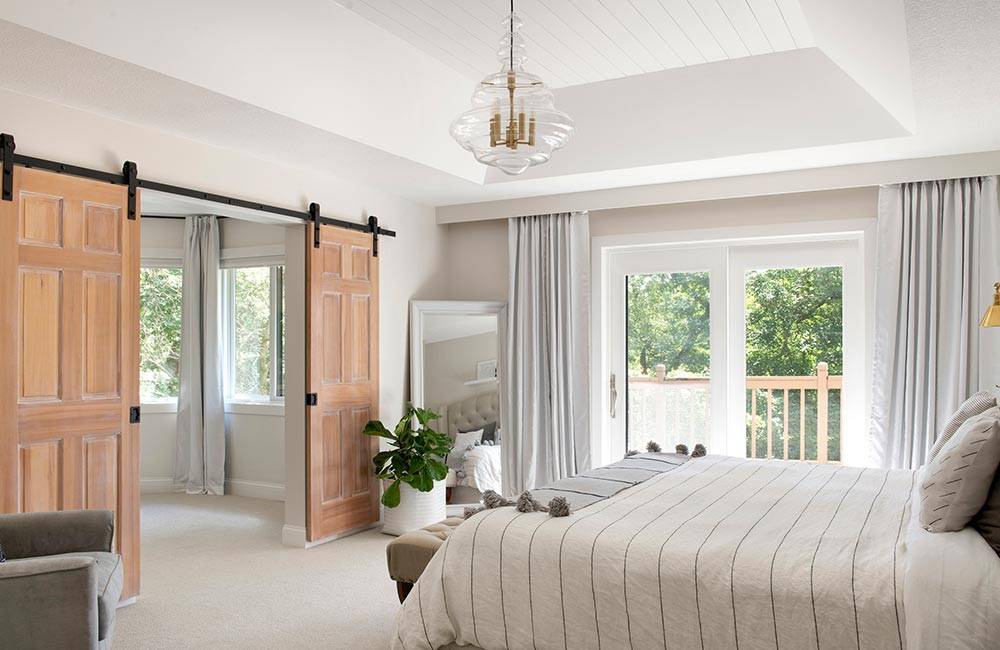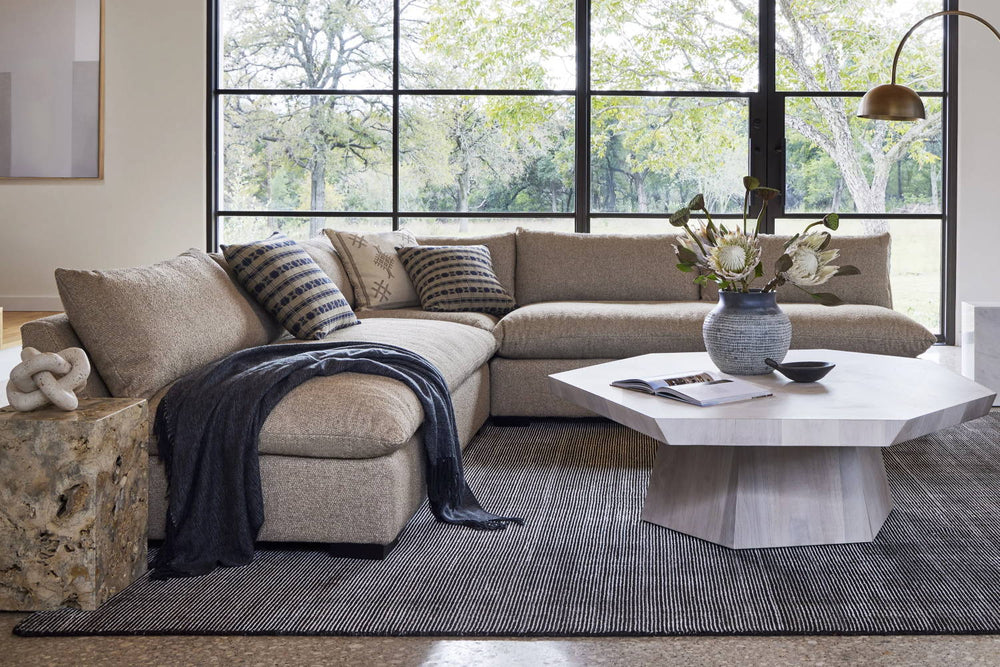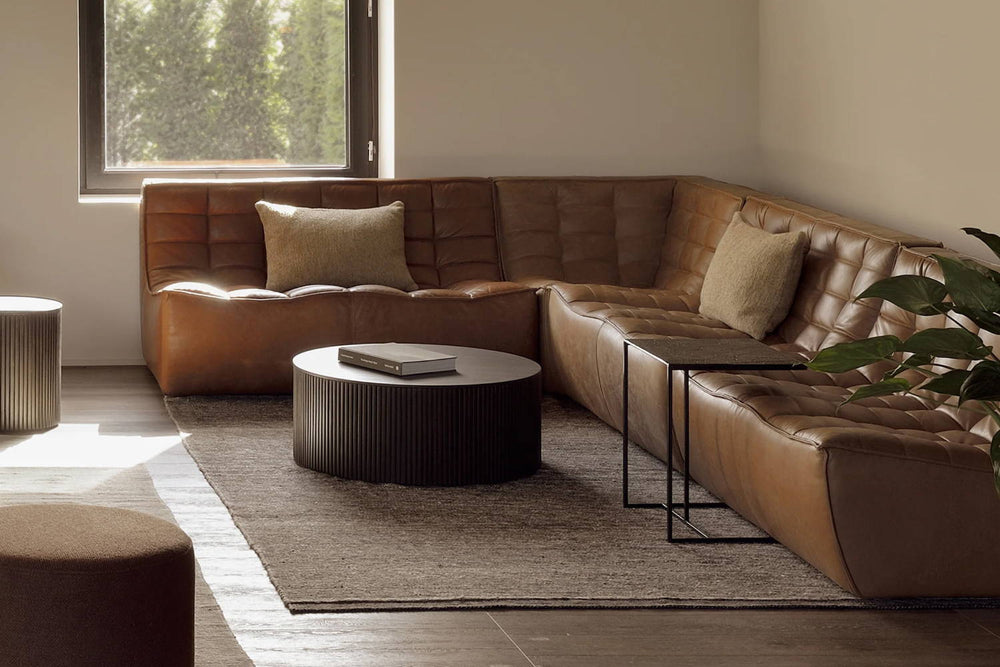You've seen them in magazines and online, those gorgeous gallery walls of art, displayed in impossibly sophisticated and chic modern houses and apartments. If the idea of a gallery wall of your own seems like an out-of-reach goal, think again. With motivation, determination, and a few helpful tips, creating a personal display of your own art collection is as simple as selecting, framing, and hanging! Follow our guidelines , below, and you'll be on your way to composing a deeply personal, and visually striking modern gallery wall suitable to almost any room in your home.
Photo credit: Aedriel.com
Creating a Gallery Wall in 5 Simple Steps
You've decided you want a gallery wall in your home. What now? No need to feel overwhelmed. Just follow the 5 simple steps listed below, and you'll find it easier to stay focused on your end goal, and have some fun along the way.
1. PICK A SPOT
A gallery wall can be created in any room, and doesn’t always necessitate a large expanse of real estate. Any wall space, vertical or horizontal, modest or massive, can be turned into a gallery. Hallway walls, a vertical bedside wall, or even a space above a door can be turned into a display area, so think carefully about the art you’re keen on exhibiting, and which wall (or walls) are most suited to the kind of display you’re after. Once you’ve decided on the wall space for you arrangement t, you can begin selecting the appropriate art pieces for the gallery composition.
2. CURATE YOUR ART COLLECTION
You may have a whole lot of art pieces to display, but edit your selection down to some key pieces. Even if you have a large wall to work with, there will likely be two or three pieces that anchor the arrangement, owing to their size, color, or the nature of the composition. Go through your collection and select the artworks essential to the gallery wall first, and then complement them with other favorites. The pieces that make the final cut will depend, obviously, on how much room you have to work with, and how many favorites you have. Once you’ve edited your artworks down to a manageable number, you’ll be ready to start framing.
3. CHOOSE YOUR FRAMES
Not all art requires framing—finished canvases, works on wood or other hard materials, for instance, may be hung sans frames. But inevitably, art does require framing, not just for esthetic reasons, but to protect the work from handling or sun damage. If you don’t have the time or money to get all your pieces framed at the same time, frame one piece at a time and slowly amass a collection that’s gallery wall-ready. Framing your art is the best way to ensure your artworks don’t end up collecting dust or filling up drawers that are never opened. Once you’ve framed them, you’ll have more incentive to hang them or display them in some other manner.
4. MOCK UP YOUR ARRANGEMENT
Visually speaking, the key to a successful gallery wall is balance. Though balance is contingent upon a number of elements—scale, spacing, artistic elements within a work of art—the relationship between each artwork to the other pieces in the arrangement is crucial. That’s why a mock-up of your wall composition is a smart first step. There are a number of ways to mock up an arrangement, including digital apps, but our favorite way is easy and way less time consuming. Get some tracing paper or brown paper. Place your framed artwork on the paper, tracing its outline. Cut and past it onto the wall with masking tape. Do this with each piece until you find the balance you’re happy with.
5. START HANGING
Now you’re ready to hang! This, of course, is the fun part, with the biggest payoff. Be prepared, though, to make some last-minute adjustments. Having done all your homework doesn’t account for intangibles—perhaps you don’t actually like the way one artwork looks next to another, even if the scale and spacing is correct. Maybe you want to give a different piece more prominence (or less) than you originally assumed. Whatever the reason, the final curation of your gallery wall will almost always happen once hanging has begun. So, enjoy the process—and most definitely enjoy the final product.
Chances are you already own plenty of raw material for a wall statement; a curatorial eye and imaginative framing is all you need to turn sentimental ephemera into a cohesive, original artistic statement.
Photo credit: T Magazine
4 Tips for Creating a Dynamic Gallery Wall
There are no hard, fast rules for composing a gallery wall, but there are plenty of common misconceptions that may result in less-than-optimal results. As you embark on your gallery wall project, keep the following 4 things in mind:
1. REMEMBER THAT YOU ALREADY OWN 'ART'
If you think owning expensive or original art is a prerequisite for having your own gallery wall, you'd be mistaken. One or two bought pieces, along with family photographs, maps, postcards, even matchboxes, can work in concert to form a beautiful gallery arrangement, adding both visual interest and emotional depth to an empty wall. Chances are you already own plenty of raw material for a wall statement; a curatorial eye and imaginative framing is all you need to turn sentimental ephemera into a cohesive, original artistic statement.
2. GET FRAMES ON THE CHEAP
Framing is an expensive business, and investing in professional framing makes sense if you own expensive or especially valued art pieces. But there are plenty of ways to get art pieces framed on the cheap, whether it's buying Iow-cost IKEA frames in bulk, or snapping up frames on sale at local home goods stores. Flea markets are a great source for frames, typically offering a range of options for as little as $10, with variety and vintage styles usually in abundance.
3. DON'T GET HUNG UP ON A 'THEME'
Much has been made about focusing on a theme when composing a gallery wall arrangement. There's plenty to recommend in a unified theme, should you decide to curate your pieces by subject matter, color, or medium, but don't make the mistake of hemming yourself in this way. Contrasting images can be just as complementary as similar ones, and balance, proportion, and spacing are just as crucial to a unified gallery wall as thematic considerations.
4. AVOID 'MATCHING' ART TO ROOM
Trying to match up color in an art piece with color in a room is always a mistake. Doing so detracts from the basic point of owning art: that it appeals to you on a visceral level for reasons that have nothing to do with interior design. Art, whether hung alone or in a gallery arrangement, should be—and, therefore, look like—a personal statement of visual expression. Thinking about art as an accessory, like a throw pillow or vase, ultimately robs it of emotional depth, rendering it a prop . Simply put, frame things that emotionally move you—whether for the way they look, or for the memories they evoke—and your gallery wall will, by definition, be the personal statement you want it to be.
Whether it's whimsical art for decorating your kid's room or that perfect piece for your gallery wall, you're sure to find something arresting and imaginative in our selection of contemporary wall art. Choose from works on canvas, paper, metal, and a range of other media.








